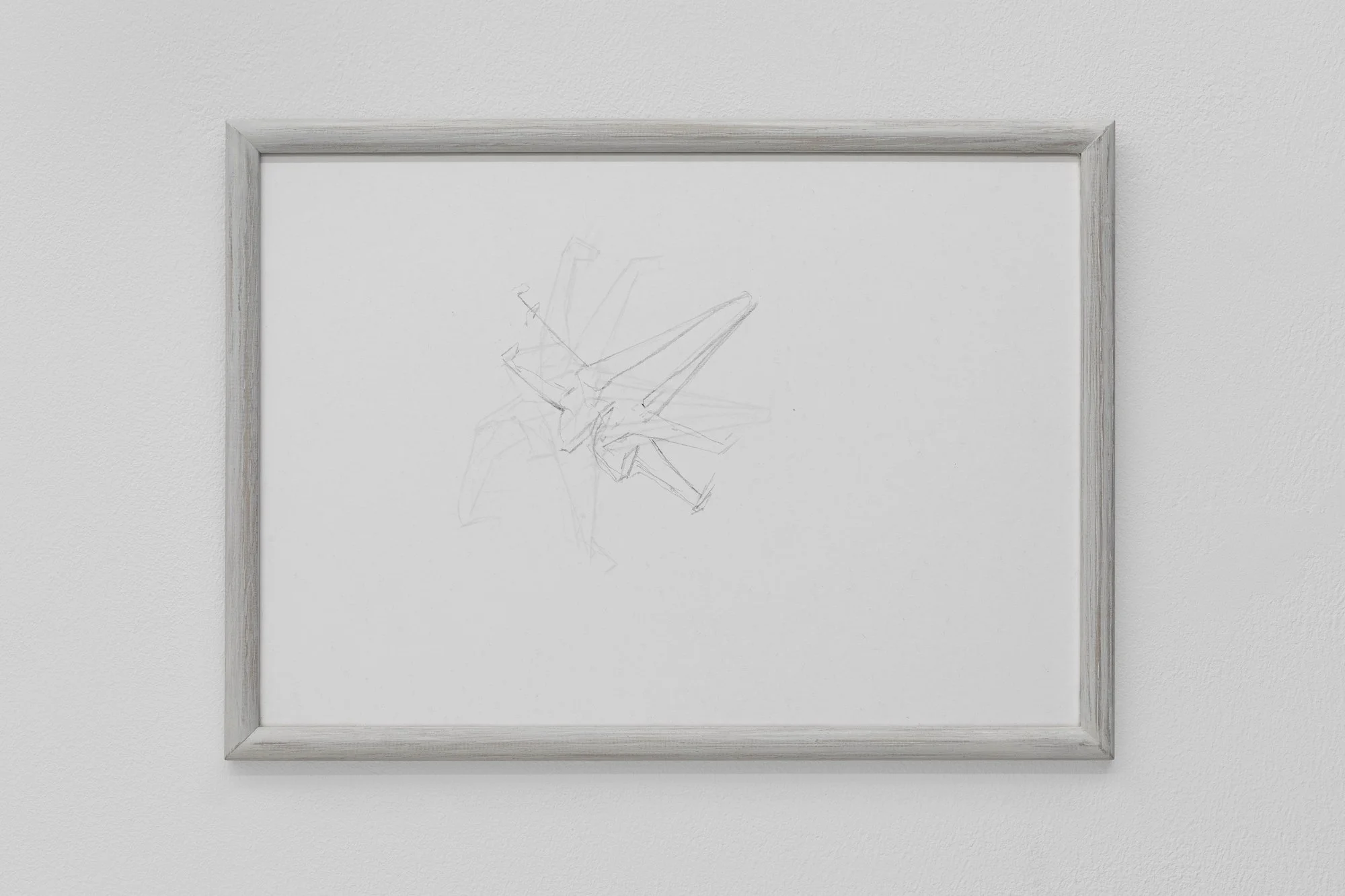Kids, don't run around the patio. It will seem bigger.
The exhibition’s title, “Kids, don’t run around the patio. It will seem bigger.” hints at a cinematic logic—space as montage, sequence as suggestion. It sets the tone for an exhibition where meaning is constructed not linearly, but atmospherically, in a three-dimensional way, all at once, in layered strata of meaning stacked like sediment.
One is almost immediately drawn to the textured plane of hot pink, encased in a steel frame. The molten doll-clay (no dolls harmed, only their substance ordered, delivered, and manipulated) is layered atop itself, interlaced with ink and stains in shades of shimmering purples, pinks, reds, flecked with silver and bluish undertones. This results in a skin-like terrain that evokes a sci-fi-tinged topography. This luxuriant materiality calls to mind barroco—the baroque pearl, irregular, excessive, and strangely opulent.
Beyond this bas-relief, the entire space reads like a satellite in orbit around Esther Gatón’s main workspace back in London—a related outpost, a kind of decampment in which the surroundings are incorporated both architecturally and ornamentally. Remaining true to the dust-filtered light of her basement studio, Gatón chose to entirely forgo the space’s overhead lighting. Instead, the works are legible solely by the grace of natural light—sometimes bright and abundant, other times dim and diffused, casting dappled shadows that glide across the surfaces. After sunset, the pieces take on a headlight glow, reflecting the sparse gleam from the street outside. This scenographic control of light can be understood as a low-tech special effect. Through this gentle refusal of the white cube as a halo or framing device—a structure that typically bestows authority, legitimacy, and a particular sort of value—the tactility of making asserts itself more vividly.
An element resembling a table reframes the space, hovering slightly within the given volume. Suspended from the ceiling, this intervention becomes a device for looking. It is not listed among the artworks, leaving its status somewhat unmoored between the works that are titled in the exhibition checklist. Technically precise yet playfully composed, this architecture of attention elegantly directs the viewer’s gaze, framing shifting vistas of sculpted doll-clay terrains, a quiet vantage point from which to observe the day’s ambient transitions.
As a pretext, the scorched, almost vandalized doll-clay evokes the perceived ambiguity of children’s violence—their laughter echoing from a place both tender and cruel. A single pencil drawing, at first glance resembling an origami flower, seems to offer a romantic counterpoint to the bas-reliefs. But its title—Of wars, wars, wars—and a conversation with the artist reveal a different register. The work is in fact a drawing of a rare childhood souvenir: origami, yes, but not a flower—a Star Wars warship. A narrative lingers in the background about the innate aggression of children. Still, that story remains peripheral. It’s the clay, the crisp pencil lines, the shifting light, and the shadows that hold the spotlight.
Throughout the presentation and during the finissage talk between Gatón and curator Piero Bisello, glimpses of a personal world and an inner landscape begin to emerge. It’s clear that the presentation isn’t merely a formal exercise. One such clue lies in the titles of the pieces on view: The tulips are too excitable (2025), Clownlike, happiest on your hands, magnifying your arrival. New statue, we’d wink at if we didn’t hear. Delighting (2024), Of wars, wars, wars (2025). All lines borrowed from poems by Sylvia Plath. A second cue, offered during the talk, was a reading of an ode to the historical figure of Joana of Castile (also called Juana la loca), echoing the romantic obsession that runs through Anne Carson’s The Beauty of the Husband: A Fictional Essay in 29 Tangos (2001). Gatón’s work plays with suggestion and subtlety, mirroring the intuitive logic of memory. Literary references or poetic descriptions are often integral to the work’s sensibility. A phrase like Burnt doll-clay on birch wood, metal flakes, walnut stain and ink reads less as a material inventory than as a fragment of verse, incantations, a magical recipe, or another hint. Her practice is steeped in literary and symbolic undercurrents, yet it doesn’t collapse into simple metaphor. These references don’t operate as citation or cultural name-dropping. Rather, they inflect the tone of the exhibition, anchoring the works in a poetic atmosphere of historical affect and introspective drama.
In Kids, don’t run around the patio. It will seem bigger., Esther Gatón creates a porous space where matter, memory, and meaning gently collide. Nothing is fully explained, yet everything feels intentional. Each ripple, shimmer, and punctuation mark registers as a painterly gesture. Inscribed with symbolism and rooted in a contemporary typology, the exhibition feels of its time. It’s both about the world and of the world. Gatón leaves an interesting synapse between the implicit and explicit meanings associated with her work. It resists conclusion, inviting not resolution but dwelling.




